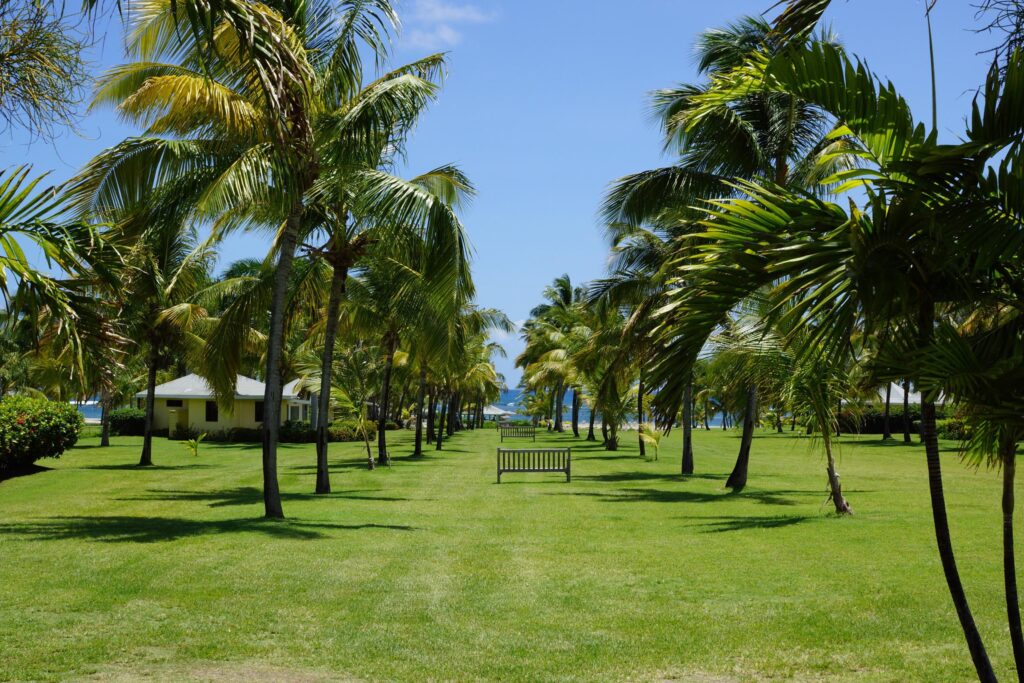Columbus used the Spanish word for „Snow“, nieves, to name Nevis, personally because the clouds shrouding its mountain reminded him of a snowcapped peak.
During the night, the webmaster unsuccessfully tried to upload the page. But the wifi here works like a hurricane: on and off and mostly ending in a disaster! Finally after rebooting the system himself, it is running again and the upload begins!
After breakfast, we decide to hire a jeep and drive around the island. First we stop at the Caplypso place and how different it looks during the day; a dump!. The road goes up and down and Rainer is pretty good at driving on the wrong side of the road. We stop at a race track for cars (looks like we are too early again), at a cemetery and want to visit the local race track for horses. Maybe it got hit by a hurricane or earthquake; but it definitely has seen better days. We drive straight to downtown Charlestown but not much to see there either. We skip the drink in a local restaurant (guess it is better for our health) and ride straight back to hotel and beach.
When Christopher Columbus explored the islands in 1493, they were inhabited by the Carib people. Today, most of the inhabitants are the descendants of African slaves. The British settled on St. Kitts—formerly St. Christopher—in 1623, and on Nevis in 1628. It is herefore the oldest British colony in the Caribbean. The French settled on St. Kitts in 1627, and an Anglo-French rivalry lasted for more than 100 years. After a decisive British victory over the French at Brimstone Hill in 1782, the islands came under permanent British control. Taking control by the colonial power was not always pretty for the native people living already on these islands. One day, the French and British slaughtered 2‘000 Caribs, causing blood to run for days at the site now known as Bloody Point.
The islands, along with nearby Anguilla, were united in 1882. They joined the West Indies Federation in 1958 and remained in that association until its dissolution in 1962. St. Kitts–Nevis-Anguilla became an associated state of the United Kingdom in 1967. Anguilla seceded in 1980, and St. Kitts and Nevis gained independence on Sept. 19, 1983.
A drop in world sugar prices hurt the nation’s economy through the mid-1980s, and the government sought to reduce the islands’ dependence on sugar production and to diversify the economy, promoting tourism and financial services. In 1990, the prime minister of Nevis announced that he intended to seek an end to the federation with St. Kitts by 1992, but a local election in June 1992 postponed the idea. In Aug. 1998, 62% of the population voted for Nevis to secede, but the vote fell short of the two-thirds majority required.
